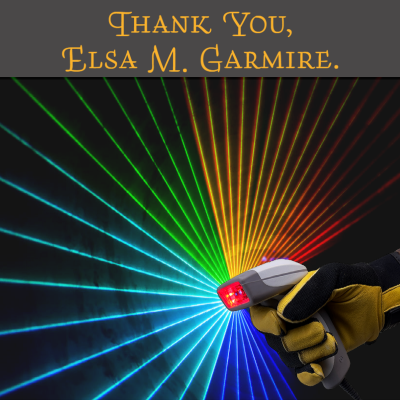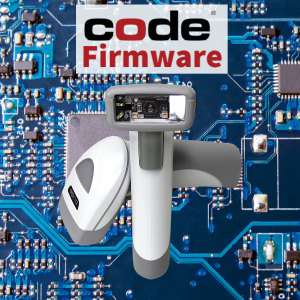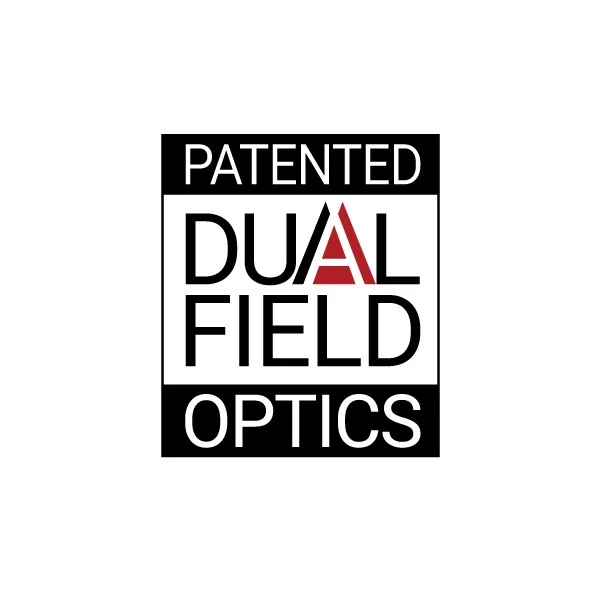Revealing some of STEM’s Oft-Unsung Heroines, Looking into the Careers of Women at Code

March is Women’s History Month, dedicated to honoring women’s contributions and resilience throughout American history. Our history books brim with stories of our founding fathers and man’s greatest achievements. But America wouldn’t be America without the ground-breaking accomplishments of our country’s most notable ladies. In fact, without two inventors who we’ll introduce you to, Code Corporation may not quite be the Code you know today.
Women’s History Month was not established until 1981 when Congress passed Pub. L 97-28, requesting that the President deem the week of March 7, 1982, Women’s History Week. It wasn’t until March 1987, only 36 years ago, when Congress passed Pub. L. 100-9, proclaiming March as Women’s History Month.
Celebrating Women’s History Month increases the visibility of women’s frequently overlooked achievements, honoring their rights and creating a more equitable world for all genders.
From windshield wipers to barcode scanner tech: Highlighting the Changing Face of STEM
From Joan of Arc, Queen Elizabeth I, and Pocahontas to Harriet Tubman, Amelia Earhart, and Malala Yousafzai, these notable women have shaped society. Women have also played vital roles in STEM disciplines: science, technology, engineering, and mathematics.
The predominantly male STEM field is shapeshifting as modern society seeks social justice, girls’ and women’s rights evolve, and inequities are analyzed. While women remained underrepresented in this field, they have grown from eight percent of STEM workers in 1970 to 27 percent in 2019. Updated 2022 workforce demographics statistics are here.
This blog highlights three remarkable — yet largely unpraised inventors — to show how far STEM has come. We’re also witnessing the changing face of STEM here at Code Corporation, which we’ll dive deeper into later in this post. Each inventory has made colossal contributions that altered World War II, made transportation safer, and pioneered the research that helped shape barcode scanning.
Mother of Wi-Fi: Hedy Lamarr
Hedy Lamarr leads the list of unsung women in STEM that we proudly recognize. You haven’t heard about Lamarr’s contributions beyond her screen presence and beauty? Let that sink in
This Austrian-American actor and inventor pioneered the origins of Wi-Fi, GPS, and Bluetooth® technology. Daughter of an inquisitive bank director and a skilled pianist, Lamarr was raised to view the world with open eyes and understand how machines work while embracing fine arts and film. At 16, her physical beauty overshadowed her inner genius when director Max Reinhardt catapulted her into stardom.
Stifled by fame, Lamarr’s scientific mind got to work inventing creations on film sets. Alongside pilot Howard Hughes, she helped design faster planes for the U.S. military by researching the fastest birds and fish to detail a new wing design. She also invented an upgraded stoplight and a water-soluble tablet that creates soda.
However, her most significant contribution was a new communication system involving frequency hopping across radio waves. Deployed in the early 1940s, this invention directed torpedoes to their targets without being detected. Both the transmitter and receiver jumped to different frequencies, which halted the interception of radio waves and allowed U.S. submarines to sink their targets.
Her novel frequency-hopping technology cleared the way for Wi-Fi, GPS, and Bluetooth. Without Lamarr’s pioneering work, Code’s Bluetooth 5 Barcode Reader, the CR2700, could have been different.

Lamarr did not receive credit or rewards for her invention until 1997, when she became the first woman to receive the Invention Convention’s Bulbie Gnass Spirit of Achievement Award. So, the next time you sit down with some popcorn to wirelessly stream the 1949 film Samson and Delilah, remember that the genius portraying Delilah is the Mother of Wi-Fi.

Mother of the Windshield Wiper: Mary Anderson
Dubbed Mother of the Windshield Wiper, entrepreneur Mary Anderson received a patent on November 10, 1903, for her automatic car window cleaning device that removed snow, ice, and sleet from a vehicle’s front window.
During a New York City winter, one year before receiving her patent, Anderson noticed a trolley car driver struggling to see through sleet-covered windows. The trolley’s multi-pane windshield system was inadequate. The driver, whose face was exposed to the elements, had to open the window and either lean out of the car or walk around to the front to hand-wipe the windshield.
Anderson thus envisioned a windshield wiper blade controlled from inside the car. Her sketches led to a lever inside the vehicle that manipulated a rubber blade on a spring-loaded arm. With a counterweight maintaining contact between the windshield and wiper, the arm could move back and forth across the windshield.
Unfortunately, after receiving a patent, her device was not taken seriously for years. Anderson never profited from her invention.
First Lady of Lasers: Elsa M. Garmire
How have women influenced barcode scanner beginnings? This story traces back to the winter of 1949 on a Florida beach. The barcode materialized when inventor Joseph Woodland traced lines into the sand, sparking an idea: perhaps wide and narrow lines (the barcode) could replace the dot and dash system of Morse code (a fascination of Woodland’s) to streamline commerce.
This radical idea morphed into the barcodes we scan with handheld scanners today. Interestingly though, the separate discovery of laser beams helped complete Woodland’s vision, as lasers became a way to read a barcode’s wide and narrow lines. And it’s thanks to Elsa M. Garmire and her enhancement of optical communications, like lasers, that barcode scanning technology is so effective today.
Credited as the First Lady of Lasers, engineer and professor Garmire was instrumental in researching and understanding the physics of lasers. Throughout her career, Garmire harnessed lasers’ beauty and practicality through experiments. In 1968, she created laser art by shining a wall of argon laser beams for spectators to walk through, giving rise to laser shows at films, concerts, and events. She experimented with light patterns by shining laser beams through transparent or textured materials, which diffused light into abstract shapes and colors.

Garmire has earned other worthy titles, such as Senior Research Fellow, Professor of Electrical Engineering, Professor of Physics, Director of the Center for Laser Studies, and the first female Dean of the Thayer School of Engineering (Dartmouth). She holds nine patents, memberships to various engineering and scientific committees, and many honorable engineering awards.
Thanks to Garmire’s work, red laser diodes became staples of barcode scanners, computer mice, and other ubiquitous peripherals. For example, early 1-D barcode scanners used lasers for pattern recognition. Later devices moved to semiconductor lasers and laser diodes. Code’s early barcode readers used laser diodes for targeting; our current devices are image-based.
Women in STEM: Conquering Challenges, Incorporating Diversity, Inclusion at Code
Just as women have influenced the handheld barcode scanner and other inventions, women in STEM continue transforming the workforce. Let’s hear from just a few of the remarkable women at Code about their experiences and views on the status of women in STEM.
Avanthi: Building on a Childhood Fascination
“I remember spending hours taking apart old electronics [as a child] and trying to put them back together again, always eager to learn more about how they worked,” Avanthi Busireddy shared. “As I grew older, my interest in engineering only deepened, and I realized that I wanted to pursue it as a career.”
Busireddy is a firmware engineer at Code Corporation, where she ensures that Code’s electronic devices are easy to use and perform as intended. She uses C, C++, and Python programming languages to write software designed to control and operate barcode scanning solutions having a processor or a microcontroller. This software, known as firmware, differs from traditional software because it is embedded into device hardware. Busireddy works on a team of engineers designing, developing, and testing firmware for electronic devices.

As a child, Busireddy was fascinated by science and technology. As an adult, Busireddy has encountered a lack of female role models and engineering mentors. She noted that there had been limited access to networking and career development opportunities along the way.
She also mentioned challenging work-life balance issues, particularly when she was expected to take on more caregiving responsibilities at home. To move forward, she contacted allies and mentors and built supportive networks within and outside of work. Busireddy added, “I always ensured to prioritize self-care and work-life balance, which helped me succeed and thrive in my career.”
When questioned about the benefits of a diverse engineering workforce, Busireddy stated, “A diverse team can bring together a wide range of perspectives and experiences, leading to more creative and innovative solutions to problems.” She explained that when people with unique backgrounds and ways of thinking unite, they can challenge each other’s assumptions and foster new, better ideas.
Finally, we asked for Busireddy’s perspective on how Code fosters inclusion.
“Code is the best organization I’ve ever worked with,” she said. “It has created an environment where I feel valued, respected, and empowered. Working at Code, I’ve experienced good policies and practices that support diversity and inclusion, such as scheduling flexibility and inclusive hiring practices to recruit diverse candidates. Code is a socially responsible organization, and I hope to see its reputation grow and make it a more attractive workplace for employees.”
Shuang: Making it Work
Like Busireddy, electrical engineer Shuang Wu was inspired to pursue a STEM career because she loves knowing how things work. At Code, Wu identifies why a product might stop working at the component level and ensures that products are manufactured correctly.
We asked Wu if she has faced any misconceptions about women in STEM, and she responded that some people assume women are good at soft skills but not technical skills. She went on to clarify that she sees and works with women who are very knowledgeable and great leaders with excellent soft skills and strong technical skills. “These are role models, and they motivate me to be as great as them,” she said.
Wu believes that a diverse engineering workforce provides different ways of viewing, approaching, or solving problems. “It encourages everyone to be open-minded and more willing to try different things [that come from] other little things, which builds up a mindset that could create more opportunities for the team and company,” she revealed. “Also, a diverse workforce helps build the team’s resilience because of the willingness to think about and accept differences.”

She concluded by adding that she feels fortunate to work at Code with so many open-minded colleagues. Wu believes the Code team extends genuine care for everyone’s growth and maintains transparency to promote inclusion and allow people to feel like they can be noticed.

Joy: STEMming the Tide
We interviewed Joy Saxey, Code’s regional HR manager, to understand her perspective on the state of women in STEM and seek helpful advice for women early in their STEM careers.
Saxey began by acknowledging that women in STEM are still significantly underrepresented.
“Although I have seen an increase, it’s not enough—I estimate that I’ve seen a 20% increase in the number of women going into a STEM-related field over the last few years,” she stated. “I’m basing this on the number of incoming resumes and my experiences attending career fairs at local universities.” However, as someone who manages all incoming job applicants at Code, she still believes that there are not nearly enough women candidates or STEM candidates in general.
The greatest change she’s witnessed in her career regarding women in STEM has been technology’s advancement. “Technology is a huge factor in attracting more women to the industry,” Saxey optimistically stated. “STEM has been male-dominated in the past, but as software and AI become more mainstream, you will see more women in these areas. In addition, these areas will allow women to be more creative.”
“It seems as if many women think STEM fields are boring, but I think they can be both exciting and even sexy,” Saxey concluded. “Everything you use daily is powered by people within the STEM community—our cars, phones, medicine, social media, everything! How can that not excite you?”
Lamarr, Anderson, and Garmire are just a few of the female inventors who have paved the way for a new generation of female engineers who are no longer innovating in obscurity. The next time you check your email using the coffee shop’s Wi-Fi, clear your windshield during a squall, or catch a glimpse of a barcode scanner’s red light, we hope you’ll have a greater appreciation for their inventors’ tenacity and ingenuity.
Explore more about Women’s History Month here.
Consider joining Code’s expanding workforce; explore job openings here.

Dual Field Optics
Code's Patented Dual-Field Optics allow quicker scanning of barcodes of all sizes.
Scan it All
Imagine being able to scan it all—near, far, large, and small. Give your team the best system for quickly scanning anything they need to.
Two is Better Than One
Dual-field scanning lets your workflow flow uninterrupted by frequent scan position adjustments. The technology gives you two lens systems with overlapping scan fields—one is configured for small barcodes and one is configured for large barcodes. (See the second image above for a diagram.)
Share This Post
Author

Jessi Elder
Many of the talented and qualified staff at Code Corporation contribute to our blog. Our team members add a unique perspective to our communications efforts, and we are fortunate to have such a great cadre of writers as part of our company.
